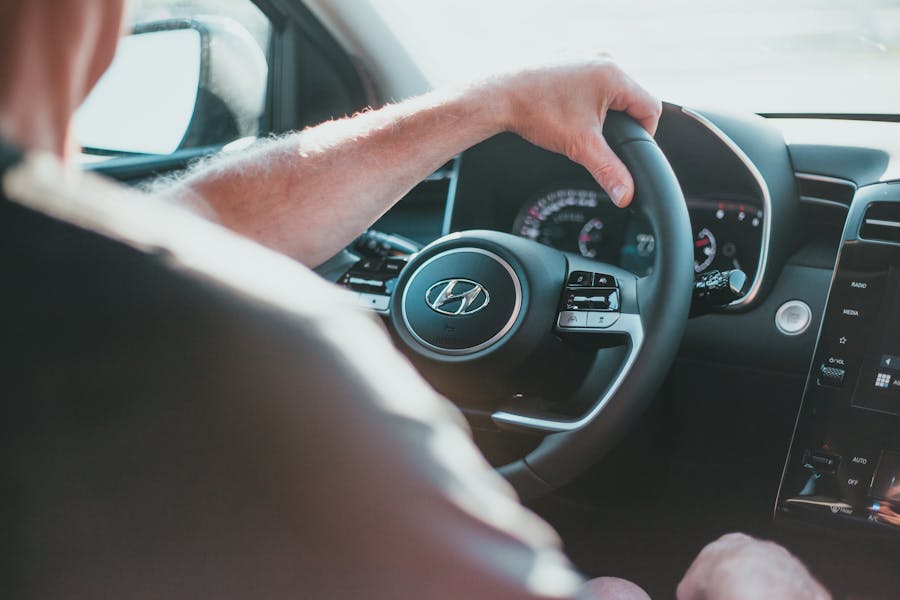Have you ever wondered, “Is it legal to drive barefoot?” The topic sparks curiosity and debate among drivers worldwide. Some believe driving barefoot is safer, while others assume it’s against the law. Understanding the legal, safety, and practical aspects of driving without shoes is essential for every motorist. In this guide, we’ll explore the legality of barefoot driving, debunk common myths, and discuss how it affects road safety. Whether you’re planning a quick trip to the beach or want to know your rights as a driver, we’ve got you covered with facts and expert insights.
Is it legal to drive barefoot?
Yes, it is generally legal to drive barefoot in most places, including the United States. There are no federal laws prohibiting it, and most state laws do not specifically ban barefoot driving. However, driving barefoot could raise liability concerns in the event of an accident if it’s deemed unsafe. Check your local traffic laws for clarity.
Understanding the Legality of Driving Barefoot
The question of whether it is legal to drive barefoot often arises from misconceptions and myths. In most countries, including the United States, there are no federal or state laws explicitly prohibiting barefoot driving. While some states have guidelines emphasizing safe driving practices, going barefoot is not illegal. However, law enforcement officers may consider it unsafe depending on the circumstances, which could lead to citations for reckless driving.
One common belief is that driving barefoot poses a higher risk of accidents. While this is not inherently true, the lack of footwear can affect a driver’s ability to apply consistent pressure on the pedals, especially during emergency maneuvers. For example, wet or sweaty feet might slip off the pedals, compromising control of the vehicle. These concerns are more about safety than legality, but they highlight why drivers need to be cautious.
Drivers should also consider the potential consequences of an accident. If barefoot driving is deemed a contributing factor to a crash, insurance claims or legal liabilities might be impacted. Reviewing local traffic codes and practicing safe driving techniques can help you navigate these concerns while staying within the law.
Safety Considerations for Barefoot Driving
Traction and Control
Driving barefoot can significantly impact your grip on the pedals. While some drivers believe they have better control without shoes, others may find it challenging to maintain consistent pressure on the accelerator or brake. The lack of a proper sole can cause feet to slip, especially during quick transitions between pedals. This variability in control can make driving barefoot unpredictable and, in certain situations, less safe.
Emergency Situations
During emergencies, quick reactions and precise control over the pedals are essential. Bare feet may lack the stability and traction needed for sudden braking or acceleration. This increases the likelihood of the foot slipping off the pedal, which could result in delayed responses and accidents. Wearing proper footwear during emergencies ensures better grip and control, minimizing risks.
Foot Protection
Driving barefoot leaves your feet exposed to potential hazards inside the vehicle. Sharp objects, debris, or even rough surfaces on the floor can cause discomfort or injury. Shoes act as a protective barrier, ensuring that your feet remain safe from unexpected harm while driving. Without footwear, even minor injuries can distract you from focusing on the road.
Weather Conditions
Environmental factors like humidity, rain, or swimming can leave your feet wet or sweaty, reducing traction on the pedals. This lack of grip increases the chances of the foot sliding off during critical moments, compromising control. Shoes with non-slip soles provide much-needed stability, especially in adverse weather conditions.
Muscle Fatigue
Barefoot driving can lead to muscle fatigue over long distances. Unlike shoes, which offer support to the arch and cushion for the feet, driving barefoot requires more effort to maintain pressure on the pedals. This additional strain can lead to discomfort and reduced precision in controlling the vehicle, particularly during extended trips. Proper footwear can alleviate this fatigue, improving safety and comfort on the road.
Myths About Driving Barefoot
Driving barefoot has long been surrounded by myths and misconceptions. Here are some common myths and the facts to clarify them:
- Driving barefoot is illegal everywhere: Most jurisdictions, including the United States, do not have specific laws prohibiting barefoot driving. While driving barefoot is legal, if it is deemed unsafe under certain circumstances, a driver could still face a citation for reckless or negligent driving.
- Driving barefoot always leads to accidents: This is a misconception. While barefoot driving can pose safety challenges in some situations, such as when feet are wet or sweaty, it is not inherently dangerous if done cautiously. Many drivers report better control over the pedals when barefoot, especially compared to wearing high heels or stiff footwear. Ensuring that feet are clean, dry, and stable on the pedals minimizes risks.
- Insurance won’t cover accidents caused by barefoot driving: Insurance companies do not specifically deny claims because a driver was barefoot. However, if barefoot driving contributed to an accident due to unsafe practices, the insurer may assess fault. The absence of footwear alone does not invalidate insurance coverage.
- Wearing flip-flops is safer than driving barefoot: This is false. Flip-flops can easily slip off or become stuck under the pedals, creating a hazardous situation. In comparison, driving barefoot often allows for better contact with the pedals, reducing the likelihood of accidents caused by loose footwear.
When and Why Drivers Choose to Drive Barefoot
Many drivers choose to drive barefoot for reasons of comfort and practicality. After a day at the beach, for example, it’s common for individuals to shed their sandy or wet shoes before getting behind the wheel. Driving barefoot eliminates the discomfort of damp or gritty footwear and allows for a more natural feel on the pedals. Similarly, people wearing high heels or stiff boots may prefer to remove their shoes, as such footwear can make it challenging to maintain proper control over the pedals. In these cases, driving barefoot may feel like a safer and more manageable option.
While driving barefoot is not inherently unsafe in most situations, drivers must carefully evaluate the potential risks. Bare feet might lack the traction needed for precise pedal control, particularly during emergencies or quick maneuvers. Wet or sweaty feet can also increase the likelihood of slipping, which could compromise a driver’s ability to respond effectively. Drivers need to ensure that their feet are clean and dry before driving barefoot to minimize these risks.
Another consideration is the possibility of injury from debris or sharp objects on the vehicle’s floor. Without the protection of footwear, drivers expose their feet to potential harm, which could cause discomfort or distraction while driving. Regularly cleaning the interior of the vehicle can help reduce these hazards.
For those who prefer the flexibility of driving without traditional footwear, lightweight sneakers or slip-resistant shoes can offer a practical alternative. These options provide the same comfort and control as driving barefoot while adding a layer of protection and stability. By keeping a pair of suitable shoes in the car, drivers can quickly adapt to different driving conditions and maintain safety.
Legal and Practical Tips for Driving Barefoot
- Know the Local Laws: Start by researching your state or country’s driving regulations to determine whether driving barefoot is allowed. Most jurisdictions, including those in the United States, do not explicitly prohibit barefoot driving. However, some traffic laws emphasize safe driving practices, which means driving barefoot could still be scrutinized if it contributes to unsafe behavior or an accident. Understanding the legal requirements in your area ensures you stay compliant while driving comfortably.
- Carry Alternative Footwear: If you frequently drive barefoot for comfort or practicality, it’s a good idea to keep a pair of lightweight or slip-resistant shoes in your car. This allows you to quickly switch to proper footwear if needed, especially in situations where driving barefoot might feel unsafe. Shoes with thin, flexible soles can provide a similar level of control as bare feet while offering protection and added grip on the pedals.
- Evaluate Safety Before Driving: Consider your ability to maintain control of the pedals before choosing to drive barefoot. Wet, sweaty, or slippery feet can reduce traction and increase the risk of your foot slipping off the pedals during crucial moments. If you notice any conditions that may compromise safety, it’s best to wear appropriate footwear to maintain reliable pedal control and reduce potential hazards.
- Keep Your Vehicle Clean: Regularly clean the interior of your car to remove debris, dirt, or sharp objects that could harm your feet while driving barefoot. Even small items on the floor can cause discomfort or distraction, which could interfere with safe driving. A clean car interior not only protects your feet but also helps ensure smooth operation of the pedals.
- Be Prepared for Emergencies: Keep essential items in your vehicle, such as a first aid kit, to address minor injuries or discomfort that may arise while driving barefoot. Having emergency supplies on hand ensures you’re prepared for unexpected situations and can continue driving safely without unnecessary stress.
Final Thoughts
Driving barefoot is generally legal in most places, including the U.S., but it’s not always the safest option. While there are no explicit laws against it, safety concerns like traction, control, and emergency handling should be considered. To avoid potential risks, evaluate your driving conditions and choose footwear that ensures optimal control of the pedals. By staying informed about local laws and making thoughtful decisions, you can drive comfortably and responsibly.
FAQ’s
Q: Is it legal to drive barefoot in the U.S.?
A: Yes, driving barefoot is legal in all U.S. states. However, safety concerns may arise depending on the situation.
Q: Can I get a ticket for driving barefoot?
A: While driving barefoot is not illegal, a law enforcement officer may cite you for reckless driving if it’s deemed unsafe in specific circumstances.
Q: Is driving barefoot safer than wearing flip-flops?
A: Yes, in many cases, driving barefoot is safer than wearing flip-flops, as loose footwear can get caught under the pedals.
Q: Can insurance deny claims due to barefoot driving?
A: Insurance companies do not typically deny claims solely for barefoot driving, but fault may be determined if it’s deemed unsafe.
Q: What are the risks of driving barefoot?
A: Driving barefoot can reduce traction, increase the risk of slipping on pedals, and cause foot fatigue during long drives. It also leaves your feet unprotected from debris on the vehicle floo








